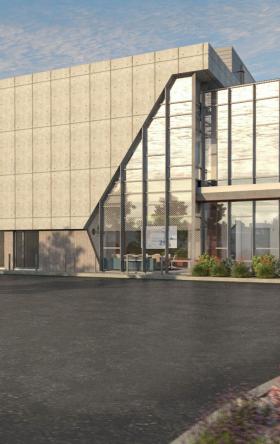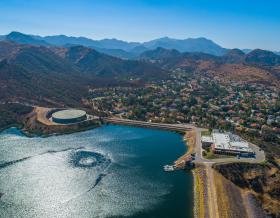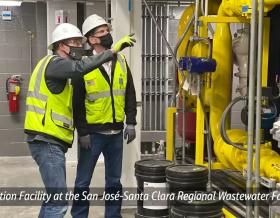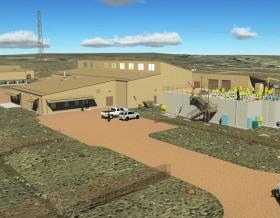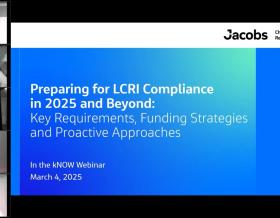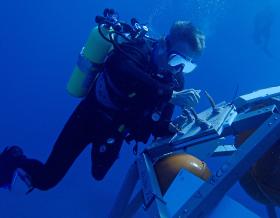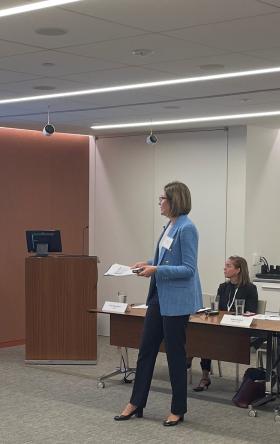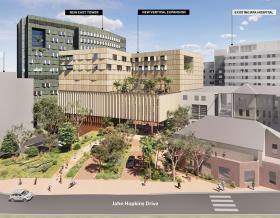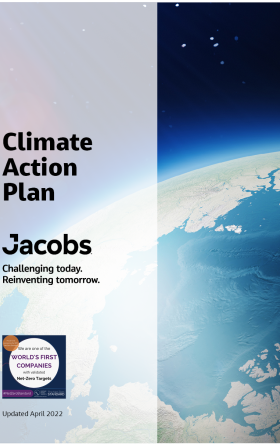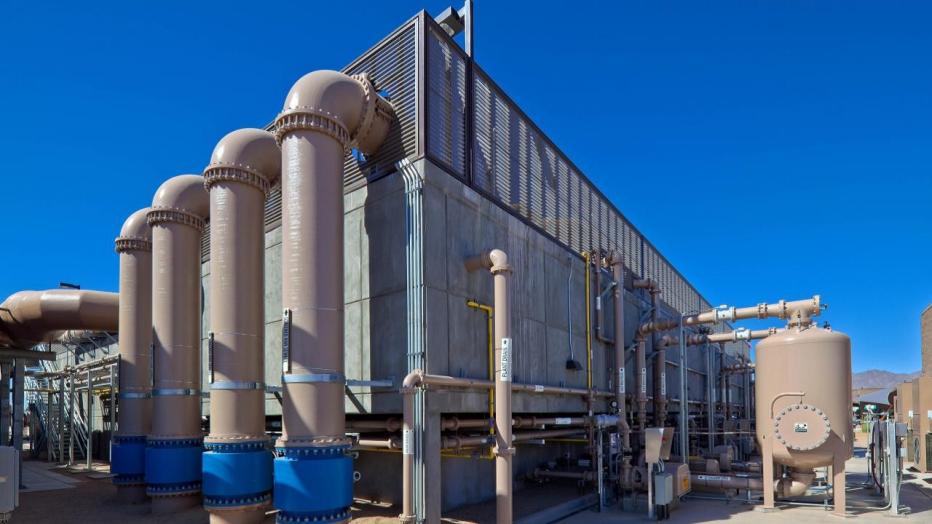
Meeting the U.S. Water Infrastructure Need: A Method with the Potential to Deliver More
In the second piece from the “3 Trends Making a Splash in Water” series, Jacobs Global Director of Water Peter Nicol shares how the growth of public-private partnerships across the water industry can help move critical upgrade projects out of backlog and improve the condition of U.S. water infrastructure. Don’t forget to drop by the first post in the series, “Cape Town’s Water Struggle Isn't Unique, but This Approach Could Prevent it from Happening in Your Town.”
Every two minutes, a water main bursts in the United States. On average, our water pipes are 47 years old, and urban areas like New York City house pipes that are nearly 80 years old.
We lose an estimated six-billion gallons of treated water daily due to these faulty, aging pipes, according to the American Society of Civil Engineers. This amount of water could serve 15 million households – the same number of viewers who tune in to weekly National Football League (NFL) games during the season.
Current U.S. funding addresses just one-third of the country’s water infrastructure needs. To meet projected capital needs, the U.S. must invest an additional $82 billion per year throughout the next decade. Making these necessary capital repairs and replacements would result in more than $220 billion in total annual economic activity and generate and sustain approximately 1.3 million jobs.
The statistics detailing impacts of our outdated, failing infrastructure are eye-opening. But, as much as repairing and replacing outdated infrastructure makes sense to social and economic vitality, the public sector alone does not have the financial means to address the significant backlog of projects. One solution is relying more on cooperative arrangements to improve the condition of our nation’s infrastructure – and that’s where public-private partnerships (P3s) can play a critical role.
Across industries – from major U.S. highway projects to a new U.S. National Institute of Health-led P3 aimed at accelerating therapy development for Parkinson’s disease – public agencies already are moving their critical projects and initiatives forward by collaborating with private entity counterparts. In a P3, skills of each side (the public agency and the private entity) are leveraged to deliver a service or facility for public use. Each party shares in the potential risks and rewards to deliver the final product, offering a more efficient way to manage risk, while driving innovation and optimization.
While P3s aren’t a fit for every agency, and every project presents unique circumstances, they do offer refreshed opportunities to take large projects out of existing backlog with innovative frameworks that leverage private investment. Currently, just 37 states enable P3s according to the National Council for Public-Private Partnerships. As our infrastructure needs grow and public water agencies grapple with how to fund and deliver their projects, we’ll likely see more of them partnering with private sector entities to plan, design, construct and even operate water and wastewater infrastructure.
Projects like Pima County Regional Water Reclamation Department’s Agua Nueva Water Reclamation Facility and Seattle Public Utilities’ Cedar Water Treatment Facility set the precedent for how water utilities can use a P3 approach known as design-build-operate (DBO) to create an affordable source of new water for communities. DBOs offer several value-based advantages:
- Guaranteed financial performance over an extended period.
- Cost savings from bundling a larger amount of work with an extended contract term.
- Incentives for the private partner for exceeding performance guarantees in the operations phase.
- Expedited implementation time through a single procurement process rather than separate procurements for design, construction and operations.
- Single point of accountability for the public partner – no worries about who’s liable for a design or construction issue that could impact operating costs or performance.
Seattle Public Utilities has managed its Cedar Water Treatment Facility under the DBO model successfully for more than 16 years. Pima County’s use of the DBO model for their Agua Nueva Water Reclamation Facility unveiled an industry-first wastewater treatment process that saved taxpayers millions of dollars, augmented precious water supplies and truly set the standard for delivering infrastructure projects under the watchful eye of regulators and stakeholders.
Last year the City of North Miami Beach entered into a unique 15-year partnership for its water and wastewater services that introduced an even more unified model for the water industry. Using an integrated program management platform including capital program management, engineering planning/design, utility operations and maintenance and progressive design-build – all from a single entity – the city is providing reliable, safer and cleaner drinking water to 180,000 customers. The city’s customers are not the only beneficiaries, though. Integrating these services into a program platform is saving residents and taxpayers more than $55 million dollars, and quickly improving overall level of service.
The operations side of P3s also offer communities an effective way to maintain the reliability of their water services, address day-to-day issues and harness innovative technologies being piloted and implemented by their private partners. In North Miami Beach, the city will benefit from having the same operations team delivering on the operations and maintenance component of the contract during the 15 years, saving them millions of dollars annually over previous operational costs.
The community of The Villages, Florida, uses a P3 to manage all of their public and private utilities, including 12 water treatment systems, four wastewater treatment plants, collections and distribution systems, meter reading and residential and commercial sanitation services. Such partnerships offer even more in terms of improved efficiencies and asset management benefits, including reduced environmental and safety risks.
As water infrastructure capital needs increase, more local and state governments will be looking to team with private entities to get projects off the ground. In fact, just a few hours away from Pima County, the City of Goodyear is embarking on some of Arizona’s most challenging water infrastructure designed and built in decades – a new $114 million water treatment facility, canal turnout, raw water pump station and transmission main and a distribution system connection – and they’ve selected the DBO model to do it.
With a greater reliance on P3s, communities and businesses around America will begin to see real progress in the maintenance and modernization of the infrastructure we depend on. Thoughtful and planned infrastructure development holds the promise of contributing to growth, creating jobs and fueling local economies. Investments made today will determine not only whether we have clean water to drink, they will provide the foundation for future prosperity.
Peter Nicol currently serves as Global Director of Water at Jacobs and was formerly CH2M’s Global Water Business Group President where he had full profit and loss responsibility for the $1.4 billion global water business, including leading more than 5,000 water professionals, in 175 offices, in more than 50 countries worldwide. Under Peter’s leadership, CH2M solidified its brand as the global market leader in water and wastewater design work, and he continues to lead Jacobs’ industry-leading water efforts. Peter joined CH2M in 1980 after receiving his bachelor of applied science degree in Geological Engineering and Applied Earth Sciences from the University of Toronto.


